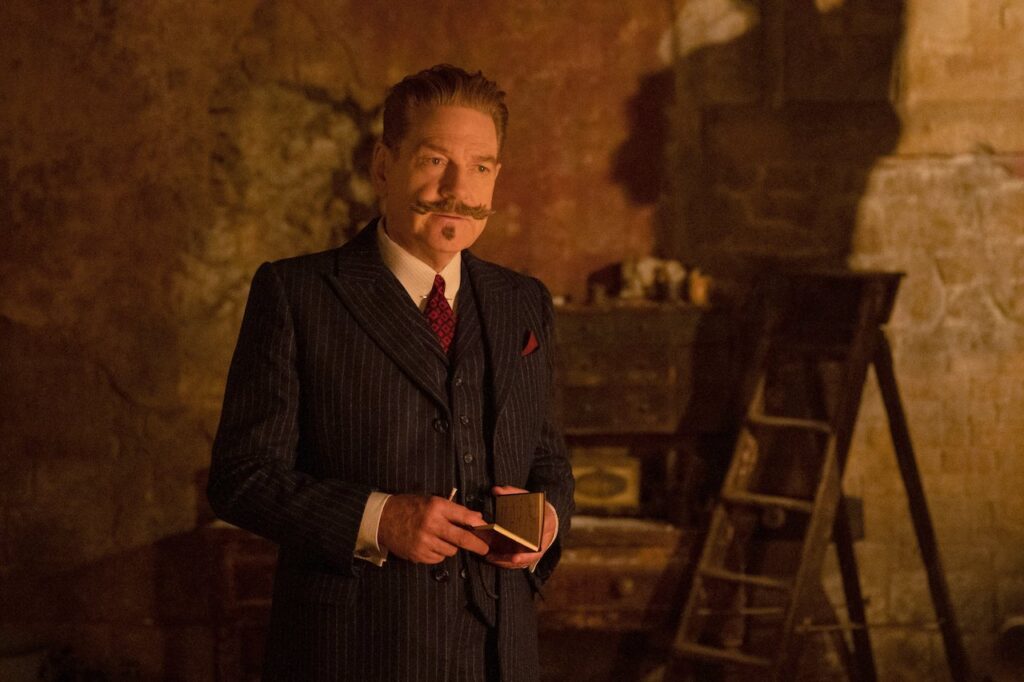NEW YORK (OSV News) – “A Haunting in Venice” (20th Century) is the third in a series of Agatha Christie adaptations, all featuring her famed sleuth Hercule Poirot, on which director and star Kenneth Branagh has collaborated with screenwriter Michael Green. Yet, in at least two related respects, the newcomer is noticeably distinct from its predecessors.
Both 2017’s “Murder on the Orient Express” and last year’s “Death on the Nile” were straightforward whodunits and both included dialogue indicating that Poirot, a self-identified Catholic in print, was indeed a believer. This time out, the brilliant Belgian is up against supposedly supernatural forces and is also portrayed as having lost his faith.
In large part, that’s due to the horrors of World War II and the Holocaust, both of which are still recent events given the film’s 1947 setting. Apparently worn out and disenchanted, Poirot has retired to La Serenissima where, with the help of police officer-turned-bodyguard Vitale Portfoglio (Richard Scamarcio), he resolutely refuses all attempts to lure him back to work.
He does so, that is, until celebrated detective novelist Ariadne Oliver (Tina Fey), an old friend, appears on the scene. Instead of a murder case, she presents Poirot with the opportunity to unmask the fraudulent techniques of spiritualist Joyce Reynolds (Michelle Yeoh).
At the invitation of renowned opera singer Rowena Drake (Kelly Reilly), Reynolds will be presiding over a Halloween-night seance at Drake’s reputedly haunted palazzo. Reynolds’ goal will be to summon up the spirit of Alicia, Drake’s recently deceased adult daughter who died in tragic, and murky, circumstances.
Of course, where Poirot goes, homicide either precedes or follows – and the seance proves no exception. As Poirot sets out to solve the ensuing crime, Green’s script, loosely based on Christie’s 1969 novel “Hallowe’en Party” (along with some of her other works) raises an interesting philosophical point.
Poirot’s habitual method is, of course, to use logic to arrive at a rational explanation for whatever set of circumstances he’s investigating and thus bring order out of chaos. Yet, without God, the ultimate source of rationality, the universe is an unintelligible tumult of accidental circumstances.
Accordingly, just as Poirot’s withdrawal from work is mute testimony to his newfound atheism, so his return to it suggests a restored belief. So far so good. However, in establishing this theme, Green somewhat conflates necromancy with religion.
If souls can be conjured up, the argument seems to run, then human beings are not merely physical but spiritual as well and must have been endowed with their souls by God. Yet, while Scripture appears to indicate that communicating with the dead is a real possibility, it’s quite clear on the point that engaging in such a practice is sinful.
Not a very apt starting point, then, for a proof of God’s existence.
Although some of the thinking at work in the screenplay may be muddled, it’s at least sophisticated enough to deserve careful analysis. Parents will have to assess whether mature teens are sufficiently equipped to take on such material. Those who are will appreciate, along with their elders, a lush, eerily atmospheric production with a generally satisfying outcome.
The film contains occult and atheism themes, disturbing images, some physical violence, a couple of instances each of profanity and crass language, about a half-dozen mild oaths and at least one crude term. The OSV News classification is A-III — adults. The Motion Picture Association rating is PG-13 – parents strongly cautioned. Some material may be inappropriate for children under 13.

